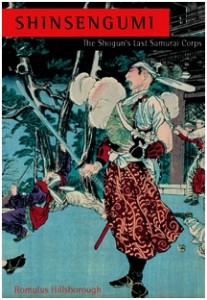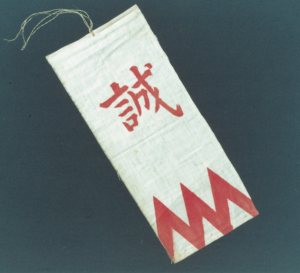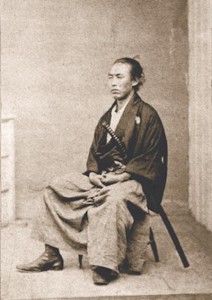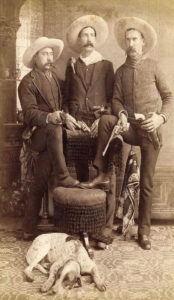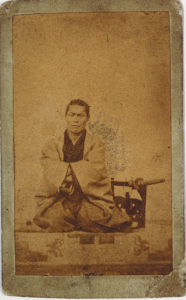
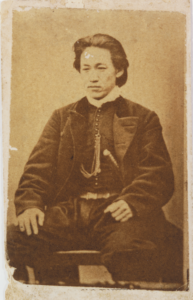
Kondō Isami (left) was chief instructor of the style of swordsmanship called Tennen Rishin-ryū, at the Shiekan in Edo. He also taught in his native Musashi province, just east of Edo. His student roster in the Tama district of Musashi exceeded three hundred, Shimozawa Kan noted in his classic Shinsengumi Shimatsuki, published in 1928. Among Kondō’s top students at the Shieikan was Hijikata Toshizō, also from Tama. The two were close friends before they established the Shinsengumi in Kyōto in Bunkyū 3 (1863). As co-leaders of the Shinsengumi, they complemented each other – though it is hard to say which of them was more ruthless in pursuing and killing their enemies.
[The photos of Kondō and Hijikata appear in my book, Shinsengumi: The Shogun’s Last Samurai Corps, courtesy of the descendants of Satō Hikogorō and Hino-shi-Furusato Hakubutsukan.]

